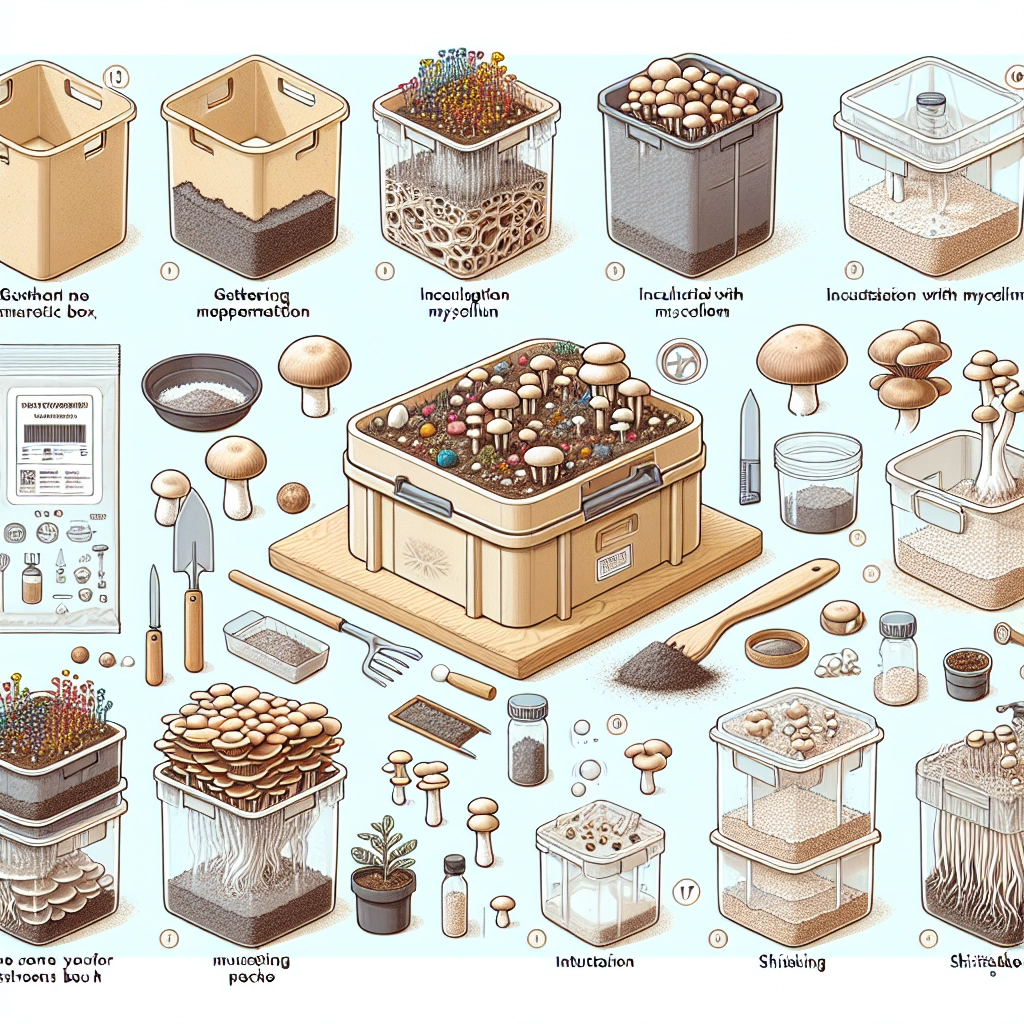
- Published on
- Authors

- Name
- ric de yuga 😄
🌟 Building an Auto Grow Mushroom Box: A Comprehensive Guide
Growing mushrooms at home can be both rewarding and fascinating. To make the process even easier, you can build an Auto Grow Mushroom Box that automates the key conditions required for mushroom cultivation. This guide will walk you through the parts needed and the steps to assemble your very own Auto Grow Box.
🛠️ Auto Grow Box Parts List
Microcontroller / Computer
Choosing the right microcontroller or computer is crucial for automating your mushroom box. Here are some options:
- **Arduino Board (
15)**
- Pros: Lots of compatible parts, affordable.
- Cons: Limited processing power, basic interface.
- Features: Can support simple automation but might struggle with more advanced features like a web app.
- **Raspberry Pi (Raspi) (
35)**
- Pros: Full-fledged computer, supports web apps, easy to adjust.
- Cons: More expensive.
- Features: Ideal for complex projects requiring a web app to monitor the grow process and sensors.
- Raspberry Pi Pico ($4)
- Pros: Very affordable, basic microcontroller.
- Cons: Requires soldering, limited capability, challenging adjustments.
- Features: Suitable for simple, low-cost setups without the need for a web app.
Sensors
CO2 Sensor ($2.14)
- Purpose: Measures CO2 levels to ensure proper air quality for mushroom growth.
- **CO2 Sensor Link **
**Temperature and Humidity Sensor (
2)**
- Purpose: Monitors the temperature and humidity, crucial for creating the ideal growing environment.
- **Temp + Humidity Sensor Link **
- **Camera (
5.40)**
- Purpose: Optional but useful for monitoring mushroom conditions via a web app.
- **Camera Link **
Adjusters
Mister ($1.43)
- Purpose: Provides necessary humidity for mushroom growth.
- **Mister Link **
Air Pump ($5.95)
- Purpose: Ensures proper Fresh Air Exchange (FAE).
- **Air Pump Link **
LED Lights (~$2)
- Purpose: Provides light needed for certain stages of mushroom growth, controlled via timer or microcontroller.
- Heater (Optional): Not necessary if growing in a temperature-controlled room but can be added for individual components.
Hardware
- Tubing: Used for connecting various components.
- Breadboard/Wiring: Essential for setting up the electrical connections.
- Box: The main container for your mushroom grow setup.
- Air Filters: Helps in maintaining clean air within the grow box.
- **Soldering Iron (
20)**: Required if using a microcontroller like the Raspi Pico that needs soldering.
Additional Costs
- Assembly: Initial assembly time may be high, but will reduce with experience.
- Soldering Iron: One-time cost unless multiple people are assembling simultaneously.
📋 Estimated Total Cost
The total cost per Auto Grow Box will depend on several factors:
- Microcontroller Used: Ranges from
- Additional Features: Sensors, camera, etc.
- Basic Hardware and Assembly: Costs decrease as more boxes are built.
Estimated Total Cost:
70 per box
🔍 Research and Development
To ensure the best results, further research is needed on:
- Ideal Temperature, Humidity, and CO2 Levels
- Optimal Light Cycles
- User Preferences from Existing Grow Boxes
- Sensor and Adjuster Placement
Designing a blueprint for assembly and ensuring ease of access for harvesting are also crucial steps.
🌐 Advanced Options
Web App Integration
Building a web dashboard to monitor CO2 levels, temperature, humidity, and camera feeds can significantly enhance the growing experience. While it adds to the complexity and cost, it offers real-time monitoring and adjustments.
Alternative Approaches
Consider using a Mushroom Grow Tent for a larger, more scalable solution instead of individually regulated Auto Grow Boxes.
🌠 Step-by-Step Assembly Guide
Step 1: Setting Up the Microcontroller
Arduino Setup:
- Install the Arduino IDE on your computer.
- Connect the Arduino board to your computer via USB.
- Upload the necessary code to control sensors and adjusters.
Raspberry Pi Setup:
- Install the Raspbian OS on your Raspberry Pi.
- Connect the Raspberry Pi to your network for remote access.
- Install necessary libraries and software to interface with sensors and adjusters.
Raspberry Pi Pico Setup:
- Solder the necessary connections for sensors and adjusters.
- Upload the firmware to the Pico.
Step 2: Integrating Sensors
CO2 Sensor:
- Connect the CO2 sensor to the microcontroller.
- Calibrate the sensor for accurate readings.
Temperature and Humidity Sensor:
- Connect the sensor to the microcontroller.
- Test the sensor to ensure accurate temperature and humidity readings.
Camera (Optional):
- Connect the camera to the microcontroller (for Raspberry Pi).
- Configure the camera settings for optimal monitoring.
Step 3: Setting Up Adjusters
Mister:
- Connect the mister to the microcontroller.
- Set up the tubing to distribute mist evenly in the grow box.
Air Pump:
- Connect the air pump to the microcontroller.
- Ensure proper air circulation with strategically placed air filters.
LED Lights:
- Connect the lights to the microcontroller.
- Set up a timer or use the microcontroller to automate the light cycles.
Step 4: Final Assembly
Wiring and Connections:
- Use the breadboard and wiring to connect all components.
- Ensure all connections are secure and well-organized.
Box Setup:
- Place all components inside the box.
- Ensure the lid can be easily removed for maintenance and harvesting.
Testing:
- Run initial tests to ensure all sensors and adjusters are functioning correctly.
- Monitor the setup for a few days to fine-tune the environment.
🌟 Conclusion
Building an Auto Grow Mushroom Box is a practical and innovative way to cultivate mushrooms at home. By following this detailed guide and conducting further research, you can create an efficient, automated growing environment. Happy growing! 🌱🍄
